Discover Y Religion
Y Religion

Y Religion
Author: BYU Religious Education
Subscribed: 1,332Played: 48,543Subscribe
Share
© BYU Religious Education
Description
Each year, religion professors at Brigham Young University (BYU) produce hundreds of publications on subjects related to the Church of Jesus Christ of Latter-day Saints. This podcast brings this research into one place to enlighten the everyday seeker of truth. Interviewing the author, we discuss why the study was done, why it matters, and why the professor chooses to be both a scholar, and a disciple. This is Y Religion.
147 Episodes
Reverse
From the moment Brigham Young emerged from the waters of baptism in 1832, a fire burned within him to preach the restored gospel: "I wanted to thunder and roar out the Gospel to the nations. It burned in my bones like fire pent up…." That same passion drove him to keep detailed records of his labors and later his service as a Church leader and prophet. In this episode, professor of Church history and doctrine Gerrit Dirkmaat discusses his work on The Brigham Young Journals: Volume 1: April 1832–February 1846. Dr. Dirkmaat shares the behind-the-scenes insights into the editorial process, explores the significance of Brigham Young's pre-Utah writings, and explains what these documents teach us about his remarkable journey from convert to prophet. Whether you're a student of Church history or simply curious about the making of a leader, this conversation offers a rare and riveting look into the testimony, labors, and special witness of the second latter-day prophet. Publications: The Brigham Young Journals: Volume 1: April 1832–February 1846 (Religious Studies Center, 2023) "The Prophets Have Spoken, but What Did They Say?: Examining the Difference between George D. Watt's Original Shorthand Notes and the Sermons Published in the Journal of Discourses," BYU Studies Quarterly, 54.4 (BYU Studies, 2015) From Darkness unto Light: Joseph Smith's Translation and Publication of the Book of Mormon (Religious Studies Center, 2015) "'Too Long Trampled on to Be Celebrated': The Latter-day Saint Protest of Independence Day 1845," in Religious Liberty and Latter-day Saints: Historical and Global Perspectives (Religious Studies Center, 2023) "Firsthand Witness Accounts of the Translation Process," in The Coming Forth of the Book of Mormon: A Marvelous Work and a Wonder (Religious Studies Center, 2015) Click here to learn more about Gerrit Dirkmaat
In a world obsessed with speed, what if the answers we need come only when we slow down and listen? In this episode, Professor Steven C. Harper invites us to pause, reflect deeply, and attune ourselves to the voice of God. Drawing from his book Wrestling with the Restoration: Why This Church Matters, Dr. Harper combines rigorous scholarship with faith to thoughtfully address critiques of the Restoration. He explores complex questions–such as the translation of the Book of Mormon and the origin of the Book of Abraham–and counsels us to slow down and carve out time to ask, "What do I know?" and "How do I know it?" Ultimately, Dr. Harper offers practical ways for us to develop our own personal of witness of Jesus Christ and the Restoration through careful study, sincere reflection, and spiritual seeking. Publications: Wrestling with the Restoration: Why This Church Matters, Deseret Book (2024) Let's Talk About The Law of Consecration, Deseret Book (2022) "'That They Might Come to Understanding': Revelation as Process," in Raising the Standard of Truth: Exploring the History of Teachings of the Early Restoration, Religious Studies Center (2020) First Vision: Memory and Mormon Origins, Oxford University Press (2019) Making Sense of the Doctrine & Covenants, Deseret Book (2012) The Joseph Smith Papers, Revelations and Translations, Volume 1: Manuscript Revelation Books, Church Historian's Press (2011) Website: https://www.stevencraigharper.com/ Click here to learn more about Steven C. Harper
Shrouded in rumor and myth, the name of Adam-ondi-Ahman (mentioned in Doctrine and Covenants 116) has sparked questions for two centuries. In this episode, Professor Alex Baugh clarifies what we know—and what we don't—about this location that holds great significance in both antiquity and early Restoration history, as well as in future prophecy. Adam-ondi-Ahman is revealed to be in Daviess County, Missouri, and is the location where Adam and Eve lived after being cast out of Eden. Joseph Smith was recorded to have said that is also "the place where Adam shall come to visit his people, or the Ancient of Days shall sit as spoken of by Daniel the prophet." Publications: "The History and Doctrine of the Adam-ondi-Ahman Revelation (Doctrine & Covenants 116)," in Foundations of the Restoration: Fulfillment of the Covenant Purposes, Religious Studies Center (2016) The Voice of the Lord: Exploring the Doctrine and Covenants, Religious Studies Center (2024) Joseph Smith and His First Vision: Context, Place, and Meaning, Religious Studies Center (2021) Latter-day Saints in Washington, DC: History, People, and Places, Religious Studies Center (2021) Conversations with Mormon Historians, Religious Studies Center (2015) Banner of the Gospel: Wilford Woodruff, Religious Studies Center (2010) Days Never to be Forgotten: Oliver Cowdery, Religious Studies Center (2009) Click here to learn more about Alex Baugh
How do we reconcile our expectations with God's unfolding plan? In this episode, Professor Derek Sainsbury explores the remarkable life of Nancy Naomi Tracy–a woman whose unwavering faith and bold defense of religious liberty and temple service helped shape the early Latter-day Saint experience. Through persecution, political exile, and personal loss, Nancy remained devoted to the gospel. Professor Sainsbury draws from her writings and activism to reveal how she navigated the tension between personal hopes and divine direction, offering a compelling lens into the cost of conviction and the legacy of spiritual resilience. Publications: "'We Have Not Been Allowed to Worship as We Please': Nancy Naomi Tracy and the Denial of Latter-day Saint Religious Liberty," in Religious Liberty and Latter-day Saints: Historical and Global Perspectives (Religious Studies Center, 2023) Joseph Smith as a Visionary: Heavenly Manifestations in the Latter Days (Religious Studies Center, 2025) "Befriending the Constitutional Law of the Land" in Doctrine and Coveants Insights: Capstone of Doctrinal Understanding (Religious Studies Center, 2025) Storming the Nation: The Unknown Contributions of Joseph Smith's Political Missionaries (Religious Studies Center, 2020) "'For the General Good of Mankind': Why Joseph Smith's Presidential Campaign Matters," Religious Educator, 21.3 (2020) Click here to learn more about Derek Sainsbury
Perfectionism in adolescence can be a heavy, even isolating, burden—shaped by social media, identity pressures, and the overwhelming number of choices youth face. Amid these challenges the Doctrine and Covenants offers a powerful reminder: "Remember that the worth of souls is great in the sight of God" (18:10). This eternal truth stands out in contrast to the feeling standards of the world. In this episode Professor Justin Dyer explains how such expectations contribute to rising perfectionism among our youth. Drawing from BYU's Foundations data, he offers advice on how parents, teachers, and leaders can help youth navigate these pressures and find peace in eternal truths. By helping young people anchor their self-worth in truth, we can guide them away from toxic perfectionism and toward a life of purpose, peace, and resilience. Publications: "Perfectionism Across Adolescence," BYU Studies Quarterly, 63.4 (2024) "The Family Proclamation: The Secular and Spiritual Context," co-authored with Michael A. Goodman, Religious Educator, 24.2 (2023) "Family Foundations of Youth Development: Research Update," Review Magazine, Winter 2023 "Adolescents, Mental Health, and the Benefits of Private Religious Worship,", co-authored with Mark D. Ogletree and Lindsay Cowdin, Religious Educator, 22.3 (2021) Family Foundations of Youth Development data website Click here to learn more about Justin Dyer
How can educators help students stop fearing their sins and start trusting Christ? In this episode, Professor Stephan Taeger discusses his article "Declared Guiltless: Justification by Faith in the Latter-day Saint Classroom." He explores how teaching justification by faith can transform our classrooms. Addressing both guilt-ridden and morally indifferent students, he clarifies the doctrine using scripture, prophetic teachings, and scholarly insights. Taeger explains how understanding grace and justification fosters peace, inspires obedience, and strengthens discipleship. He offers practical teaching models that help students internalize their justified state and live with hope, love, and purpose. This episode empowers gospel educators to teach grace with clarity and conviction. Publications: "Declared Guiltless: Justification by Faith in the Latter-day Saint Classroom," Religious Educator, 25.2, 2024 Joseph Smith as a Visionary: Heavenly Manifestations in the Latter Days, Religious Studies Center, 2025 "By Our Own Transgressions: Understanding God's Punishment," in This Great and Lasting War: Studies in Alma 45–63, Religious Studies Center, 2025 "The Word Made Flesh: Teaching the Gospel Concretely," Religious Educator, 18.1, 2017 "Using Elements of Narrative to Engage Students," Religious Educator, 16.3, 2015 Click here to learn more about Stephan Taeger
The scriptures are our most powerful tools for teaching. President J. Reuben Clark Jr. explained that "[we] are to teach this Gospel using as [our] sources and authorities the Standard Works of the Church and the words of those whom God has called to lead His people in these last days." In this episode Professors Gaye Strathearn and Joe Spencer discuss the power of teaching with the scriptures. They highlight ways teachers can draw knowledge from and incorporate the scriptures into their teaching. Y Religion Presents: Gospel Teaching is a limited series podcast where, each week during summer 2025, expert teachers share insights that highlight key principles and practices of effective gospel teaching.
How does the Holy Ghost assist in our preparation and delivery of lessons? In this episode professors Hank Smith and Ryan Sharp demystify what it means to teach by the Spirit. They discuss ways to invite the Spirit to guide both teachers and learners. Y Religion Presents: Gospel Teaching is a limited series podcast where, each week during summer 2025, expert teachers share insights that highlight key principles and practices of effective gospel teaching.
The Lord has invited, "Teach ye diligently and my grace shall attend you, that you may be instructed more perfectly in theory, in principle, in doctrine, in the law of the gospel, in all things that pertain unto the kingdom of God, that are expedient for you to understand" (Doctrine & Covenants 88:78, emphasis added). In this episode President Mark L. Pace and Professor Ken Alford discuss resources and methods for organizing ourselves and preparing to teach a lesson. Y Religion Presents: Gospel Teaching is a limited series podcast where, each week during summer 2025, expert teachers share insights that highlight key principles and practices of effective gospel teaching. Resources Teaching in the Savior's Way Book of Mormon Art Catalog Gospel Art BYU Studies Religious Studies Center Neal A. Maxwell Institute for Religious Scholarship Scripture Citation Index The Joseph Smith Papers
How do you prepare and adjust a message to connect with those you are leading? What methods can teachers—from all backgrounds and experiences—use when preparing for different teaching moments? In this episode, sister Emily Belle Freeman and Professor Brad Wilcox discuss tips on knowing and connecting with your audience when preparing and leading lessons. Y Religion Presents: Gospel Teaching is a limited series podcast where, each week during summer 2025, expert teachers share insights that highlight key principles and practices of effective gospel teaching.
What makes powerful gospel teaching? What are the effective elements that any teacher— no matter their training, situation, or personality—can implement so that deepened faith and conversion can happen in the lives of learners? In this episode, brother Chad Webb and Elder Clark Gilbert highlight essential principles and practices that invite the influence of the Spirit of God to foster powerful gospel teaching. Y Religion Presents: Gospel Teaching is a limited series podcast where, each week during summer 2025, expert teachers share insights that highlight key principles and practices of effective gospel teaching.
President Dallin H. Oaks has taught that "every member of The Church of Jesus Christ of Latter-day Saints is, or will be, a teacher. Each of us has a vital interest in the content and effectiveness of gospel teaching." How might we prepare ourselves to teach with clarity and the inspiration of the Holy Ghost? In this episode professors John Hilton III and Casey Griffiths introduce "Y Religion Presents," a special series of weekly episodes on a common theme. The 2025 motif focuses on gospel teaching. In the following eleven episodes, leading experts discuss a variety of approaches, skills, and techniques for teaching—at home or in church—in the Savior's way. Each episode is intercut with perspectives from two presenters, providing diverse voices, multiple applications, and more holistic approaches to touch the hearts and enlighten the minds of students. Listeners preparing to teach in any capacity can take away new approaches and perspectives as they continue to hone their craft of teaching.
When some elders criticized the language of Joseph Smith's revelations in 1831, the Lord provided powerful truths in Doctrine and Covenants 67 to strengthen their faith—truths that remain vital for us today. In this podcast, Professor Searle outlines five key principles from the section that can help us build greater trust in prophetic counsel: (1) act on the prophet's invitations, (2) recognize righteousness within revelations, (3) sincerely seek Jesus Christ, (4) follow the guidance of the Spirit, and (5) move forward in faith. Trusting prophets is crucial for spiritual growth and navigating uncertainty, and learning from the challenges of past can give us greater power to follow the prophet in our day. Publications: · "Following Prophets When We Have Questions (Section 67)" in Doctrine and Covenants Insights (Religious Studies Center, 2025). Click here to learn more about Travis Searle
The John A. Widtsoe Foundation recently introduced the Understanding Our Neighbors series to "foster respect and interfaith dialogue." In this episode Professor Shon Hopkin, Department Chair of BYU Ancient Scripture, discusses the second book in this series Understanding Our Jewish Neighbors co-written with Rabbi Mark S. Diamond. The book presents guide to understanding the similarities and differences between The Church of Jesus Christ of Latter-day Saints and leading Jewish traditions. Professor Hopkin explains how listeners can take away a succinct understanding, reverence, and appreciation for both faiths, their traditions, and their members. Publications: Understanding Our Jewish Neighbors by Rabbi Mark S. Diamond & Professor Shon D. Hopkin, Cedar Fort, 2024 John A. Widtsoe Foundation website "Teaching That Leads to Enduring Conversion," Religious Educator, 25.3, 2024 "The Covenant among Covenants: The Abrahamic Covenant and Biblical Covenant Making," Religious Educator, 23.2, 2022 "Supersessionism and Latter-day Saint Thought: An Appraisal," Jared W. Ludlow, Andrew C. Reed, and Shon D. Hopkin, in Understanding Covenants and Communities: Jews and Latter-day Saints in Dialogue, Mark S. Diamond and Andrew C. Reed, ed., Religious Studies Center, 2020 Opening Isaiah: A Harmony, with Ann N. Madsen, Religious Studies Center, 2018 Abinadi: He Came Among Them in Disguise, Religious Studies Center, 2018 Click here to learn more about Shon Hopkin
The first witnesses of the Resurrection of Jesus Christ were some of his female disciples. Mary Magdalene witnessed the empty tomb and was the first to encounter the risen Savior. Additionally, Joanna, Mary the mother of James, and other unnamed women, who had come to the tomb to anoint the body of Jesus, saw the empty tomb and reported it to the apostles. In this episode, Professor Gaye Strathearn explores the profound impact of the Easter events through the experiences of the women who witnessed the Crucifixion and Resurrection of Jesus Christ. She explains how Luke's narrative, with support from the other Gospels, connects these women to Jesus's ministry in Galilee and portrays them as dedicated disciples who ministered to Jesus and followed him to Jerusalem. Further, the discussion underscores the women's loyalty and sacrifice, emphasizing their presence at the Crucifixion and their discovery of the empty tomb. In exploring these narratives, we can increase our knowledge of the enduring hope and faith that the Easter events inspire and add our own witness that "he is risen" (Mark 16:6). Publications: "Women Witnesses of the Easter Events" in He Was Seen: Witnessing the Risen Christ, David M. Calabro and George A. Pierce, ed., Religious Studies Center, 2024. "The Chosen's Amplification of Women's Voices in Scripture," in Watching The Chosen: History, Faith, and Biblical Interpretation, Robert K. Gtarcia, Paul Gondreau, Patrick Gray, and Douglas F. Huffman, ed., Eerdmans, 2025. "Experiencing the Doctrine of Christ," Religious Educator, 25.3, 2024. Sacred Time: The Sabbath as a Perpetual Covenant, Religious Studies Center, 2023. "Discipleship in the Olivet Discourse in Mark's Gospel," in "Behold the Lamb of God": An Easter Celebration, Richard Neitzel Holzapfel, Frank F. Judd Jr. , and Thomas A. Wayment, ed., Religious Studies Center, 2008. "'Holiness to the Lord' and Personal Temple Worship," Religious Educator, 23.1, 2022. Click here to learn more about Gaye Strathearn
According to the earliest gospel accounts, on the night before his crucifixion, Jesus dined with his disciples to observe the feast of the Passover and institute what would later become the Christian eucharist (or sacrament). What would it have looked like to sit down with them that night? In this episode, Professor Matthew Grey reassesses the New Testament narratives of the Last Supper, especially its physical setting and manner of dining, by examining modern research on early Jewish dining customs with archaeological data. He challenges traditional views of Jesus and his disciples dining in an affluent upper room with a Roman triclinium (banquet hall), as the event is often depicted in art. Instead, he argues that the meal likely took place in a modest, non-elite home and reflected the lower-class dining practices of the time: sitting on reed mats, sharing cooking pots in clusters of 3—4 individuals, dipping their hands or bread into the shared vessels, and passing around a shared cup of wine. Professor Grey details how examining these new perspectives might help us envision and experience a more accurate understanding of the Last Supper's historical and social setting as described in the synoptic gospels. Publications: "'Where May I Eat the Passover with My Disciples?': Reassessing the Urban Setting, Furnished Room, and Dining Practices of Jesus's Last Supper," in Pushing Sacred Boundaries in Early Judaism and the Ancient Mediterranean, Brill, 2023 A Place Called Gethsemane: Seeing the New Testament Story and Site in its First-Century Context with Richard Holzapfel, Deseret Book, 2025 "Simon Peter in Capernaum: An Archaeological Survey of the First-Century Village," in The Ministry of Peter, the Chief Apostle, Religious Studies Center, 2014 Click here to learn more about Matthew Grey
How does understanding the interconnected purposes of the sacrament, as presented in Doctrine & Covenants 27, deepen our appreciation for this sacred ordinance? In this episode Matthew O. Richardson, professor of Church history and doctrine, discusses several key themes and gospel principles related to the ordinance of the sacrament. He presents three specific purposes: remembering the past, specifically the Atonement and Resurrection of Jesus Christ; looking forward to future redemption; and providing safety and protection in the present. Further, he discusses the historical context and symbolism of the sacramental emblems and connects them to putting on the armor of God and illustrates its role in providing spiritual protection. In understanding the symbolism of these emblems, we can enhance our worship experience and foster a closer relationship with the Savior. Publications: "Sacramental Connections: Deliverance, Redemption, and Safety (Doctrine & Covenants 27)" originally published in You Shall Have My Word: Exploring the Text of the Doctrine and Covenants (Religious Studies Center, 2012) "We Have Now Received the Atonement" in Shedding Light on the New Testament: Acts—Revelation (Religious Studies Center, 2009) "The Savior's Love" in Our Savior's Love: Hope & Healing in Christ (Religious Studies Center, 2015) "Losing the Sacred Perspective: Social Ethics and Character Development" in Moral Foundations: Standing Firm in a World of Shifting Values (Religious Studies Center, 2008) Click here to learn more about Matthew O. Richardson
Prior to their exodus west, nearly 90,000 converts journeyed across the seas to join the saints in America. In this episode Fred E. Woods, professor of Church history and doctrine, details the faith and immigration experiences of these saints as he discusses his recent publication Ports to Posts: Latter-day Saints Gathering in the Nineteenth Century. Professor Woods explores the port of Liverpool, England, the main point of embarkment for many converts, examines sailing conditions across the Atlantic for converts and non-converts alike, and details the arrival of these early pioneers into American harbors and the various posts they made contact with along the way. In addition to exploring how these converts gathered unto Zion, Professor Woods shares why so many members left their homelands to "be gathered in unto one place" (Doctrine & Covenants 29:7). Publications: Ports to Posts: Latter-day Saint Gathering in the Nineteenth Century (University of Nebraska Press, 2025) Saints by Sea—Latter-day Saint Immigration to America website "The Saints of Las Vegas" (Y Religion, episode 82, 2023) Bright Lights in the Desert: The Latter-day Saints of Las Vegas (University of Nevada Press, 2023) The Latter-day Saint Image in the British Mind (Greg Kofford Books, 2022) "The Ascension of Abraham: A Mortal Model for the Climb to Exaltation" (Religious Educator, 23.2, 2022) "Conversions, Arrests, and Friendships: A Story of Two Icelandic Police Officers" (Religious Educator, 20.1, 2019) Saints of Tonga: A Century of Island Faith (Religious Studies Center, 2019) Kalaupapa: The Mormon Experience in an Exiled Community (Religious Studies Center, 2017) Sacred and Historical Places Hawai'i: A Guide to LDS Historic Sites in Hawai'i with Mary Jane Woodger and Riley Moffat (Mormon Historic Sites Foundation, 2016) "Launching Mormonism in the South Pacific: The Voyage of the Timoleon" in The Growth and Development of Mormon Missionary Work (Religious Studies Center, 2012) Click here to learn more about Fred E. Woods
In this episode, Dr. Nicholas J. Frederick discusses his article "It's Not the End of the World; It's Just the Apocalypse: The Book of Revelation in the Book of Mormon" co-authored with Dr. Joseph M. Spencer. Professor Frederick examines the intricate relationship between the Book of Mormon and the New Testament, particularly focusing on the Book of Revelation, by highlighting key textual allusions, type scenes, and quotations between the two. For example, he compares Nephi's vision as a variant of the visions recorded in Revelation, reinterpreting and recontextualizing its imagery and language. He details how it stretches the language and imagery of Revelation across a broader historical framework. Further, Dr. Frederick identifies three key revisions that expand our understanding: the reapplication of New Jerusalem imagery to describe Christ's terrestrial visits, the use of apocalyptic language to depict Christ's Crucifixion, and the equating of the great and abominable church with the great harlot of Revelation 17—18. These revisions emphasize the significance of Christ's earthly ministry and death, presenting a typological view of sacred history with pivotal moments of Christ's sojourn. Publications: "It's Not the End of the World; It's Just the Apocalypse: The Book of Revelation in the Book of Mormon" (BYU Studies Quarterly, 63.2, 2024) "Section 77 and Book of Revelation Scholarship" (Religious Educator, 22.2, 2021) "The Book of Mormon and the Academy" (Religious Educator, 21.2, 2020) "The Use of the Old Testament in the New Testament Gospels" (in Prophets and Prophecies of the Old Testament, Religious Studies Center, 2017) Click here to learn more about Nicholas J. Frederick.
Contemporary views on marriage and family have changed significantly over time. How much of our understanding of marriage and family is shaped by societal norms versus prophetic guidance? In this episode, professor of Church history and doctrine Michael A. Goodman examines the secular and spiritual context surrounding "The Family: A Proclamation to the World." He discusses how the rise of expressive individualism, the sexual revolution, divorce rates, cohabitation, and other factors have played into the cultural and legal shifts in marriage norms. As he delves into the spiritual context of the proclamation, Professor Goodman outlines how it serves as more than a mere policy statement but a reaffirmation of eternal truths and doctrines. Publications: "The Family Proclamation: The Secular and Spiritual Context" by Michael A. Goodman and W. Justin Dyer (Religious Educator, 24.2, 2023) "Religion and Perfectionism" (BYU Studies Quarterly, 63.4, 2024) "Individual, family, peer, and religious community predictors of adolescent religious deidentification" by Sam A. Hardy, Russ Amelang, and Michael Goodman (Applied Developmental Science, 2024) "Religion and LGBTQ Suicidality: A Systematic Review" (Archive for the Psychology of Religion, 2023) "Constancy amid Change: Latter-day Saint Discourse on Gender and Sexuality" by Michael A. Goodman and Daniel Frost (BYU Studies Quarterly, 61.3, 2022) "'Oh Say, What Is Truth?': Approaches to Doctrine" (BYU Studies Quarterly, 60.3, 2021) "'Line upon Line': Joseph Smith's Growing Understanding of the Eternal Family" (Religious Educator, 20.1, 2019) "The Influence of Faith on Marital Commitment" in By Divine Design (Religious Studies Center, 2014) Click here to learn more about Michael A. Goodman


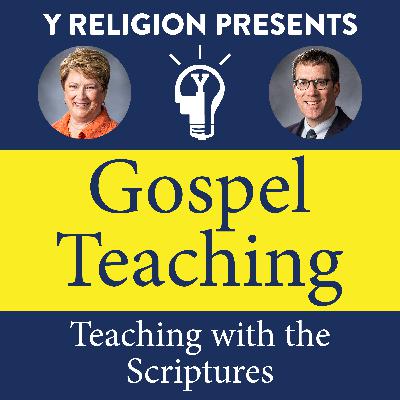
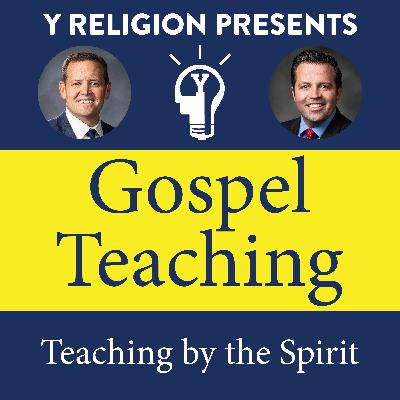
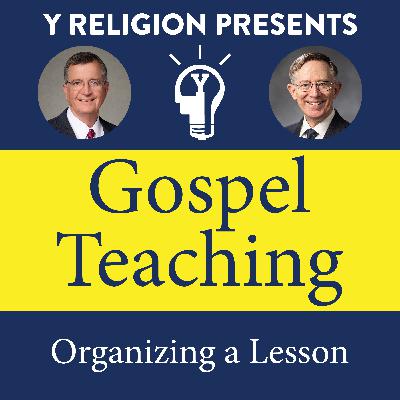
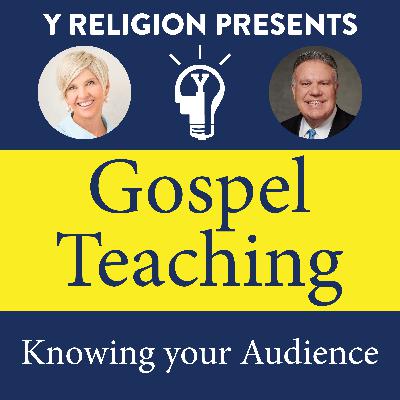
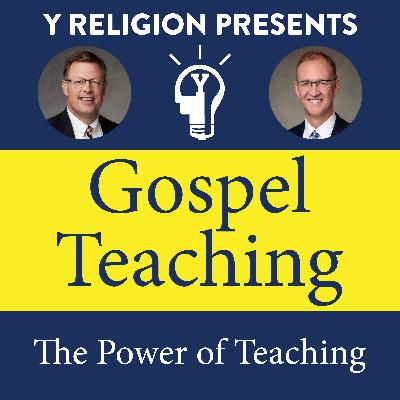




This episode was amazing, thank you!
Are there any resources to help people find "parables" to teach kids? I have a daughter with low self-esteem and social anxiety. She has trouble making friends and generally waits for people to approach her. This episode made me think maybe I could teach her through a story that she needs to be the one to be a friend to others, but I fear I lack the creativity to make up an applicable story.
Really enjoyed getting to know more about such a fascinating and faithful member who wasn't afraid to be who she was and to share it with others.
What a great way to start off this podcast series. So much to think about and consider.